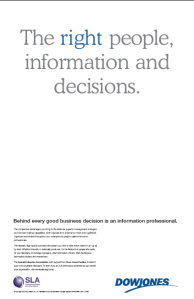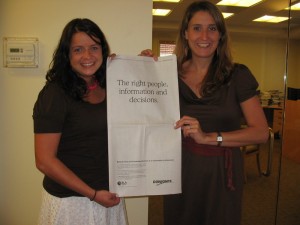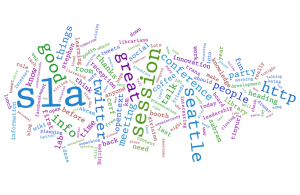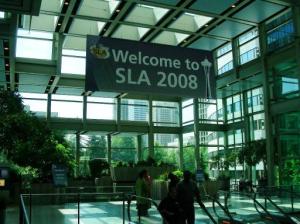 Not surprisingly this topic came up many times and in many different ways during the recent annual SLA conference in Seattle.
Not surprisingly this topic came up many times and in many different ways during the recent annual SLA conference in Seattle.
The new generation of information professionals
As I mentioned previously I see the new information professionals as absolutely key to our future, especially given the demographic of the profession which will result in 58 percent of the members of SLA reaching 65 by 2019.
If the three young people (Christina de Castell, Stacey Greenwell, Daniel Lee) on the panel session titled Perspectives of New Information Professionals are representative of their generation then our future is in very capable hands.
SLA Alignment Project
SLA is funding a project with Fleishman-Hillard, the international consulting firm which is leading a team made up of Outsell and Social Technologies. The Alignment Project will be consulting widely both inside and outside the information profession to help SLA anticipate the future and create a strong and relevant brand.
Breaking down stereotypes of librarians
Librarians often suffer from stereotypes in the media, but in my experience many information professionals do somewhat lack in confidence. So it was fascinating to hear Stephen Abram the current President of SLA refer to his early years, when he could never imagine becoming a leader both in his career and of a global association. Having known Stephen for quite a few years now, it came as a big surprise to find out how far he has had to come to reach this point.
Another commonly occurring trait in librarians (which is almost never covered by the media) is their inner strength. I think of it as the opposite of the description of Israelis as Sabras. (Sabra (Hebrew: צבר) is a term used to describe a native-born Israeli Jew. The word is derived from the Hebrew name for the prickly pear cactus, i.e. “tzabar”. The allusion is to a tenacious, thorny desert plant with a thick hide that conceals a sweet, softer interior, i.e., rough and masculine on the outside, but delicate and sensitive on the inside. Wikipedia)
Instead, the librarian has a soft outer shell, but inside is a core of steel. An excellent example of this is Ann Sparanese, a librarian at Englewood Library in New Jersey. She is credited (and gets a foreword mention to prove it) with saving Michael Moore’s first book Stupid White Men. To quote Moore, “Librarians see themselves as the guardians of the First Amendment. You got a thousand Mother Joneses at the barricades! I love the librarians, and I am grateful for them!” Salon website.
Adding value to our services
According to research done by Barbara Quint, Google answers as many questions in 30 minutes as all librarians in the world answer at reference desks in 15 years. So the only way to keep ahead of this type of competition is to constantly add value to our service. We need to understand our customers needs better and work more closely with them. That way we can become more of a consultancy service than just providing quick and simple reference answers. This is a topic I have written about in Moving from readers to customers to clients in the Business & IP Centre at the British Library, Business Information Review, Vol. 25, No. 2, 125-126 2008
 I don’t normally write much about my SLA Europe activities. But the latest issue of the Newsletter (which I edit) has been something of a labour of love.
I don’t normally write much about my SLA Europe activities. But the latest issue of the Newsletter (which I edit) has been something of a labour of love.






